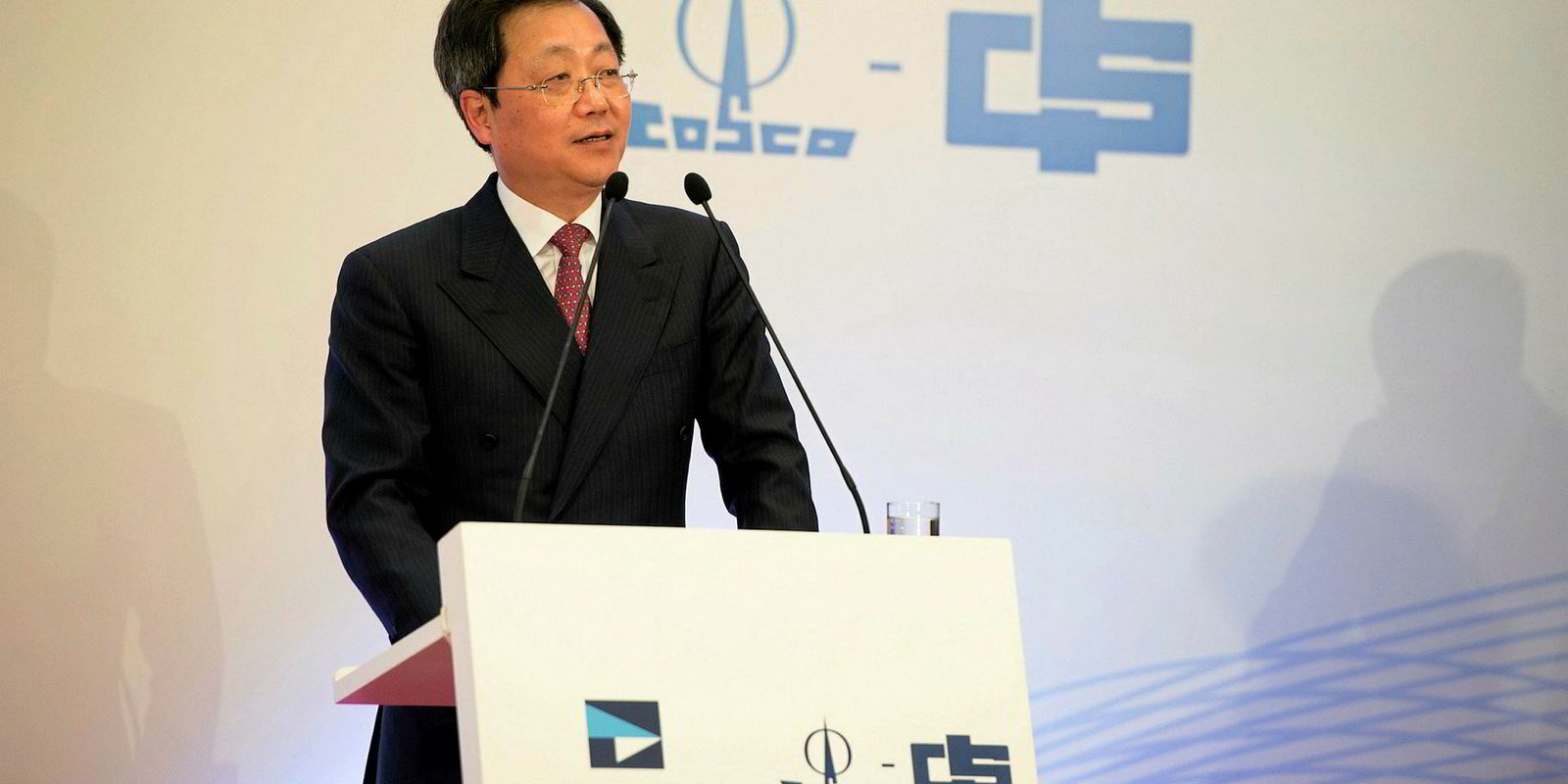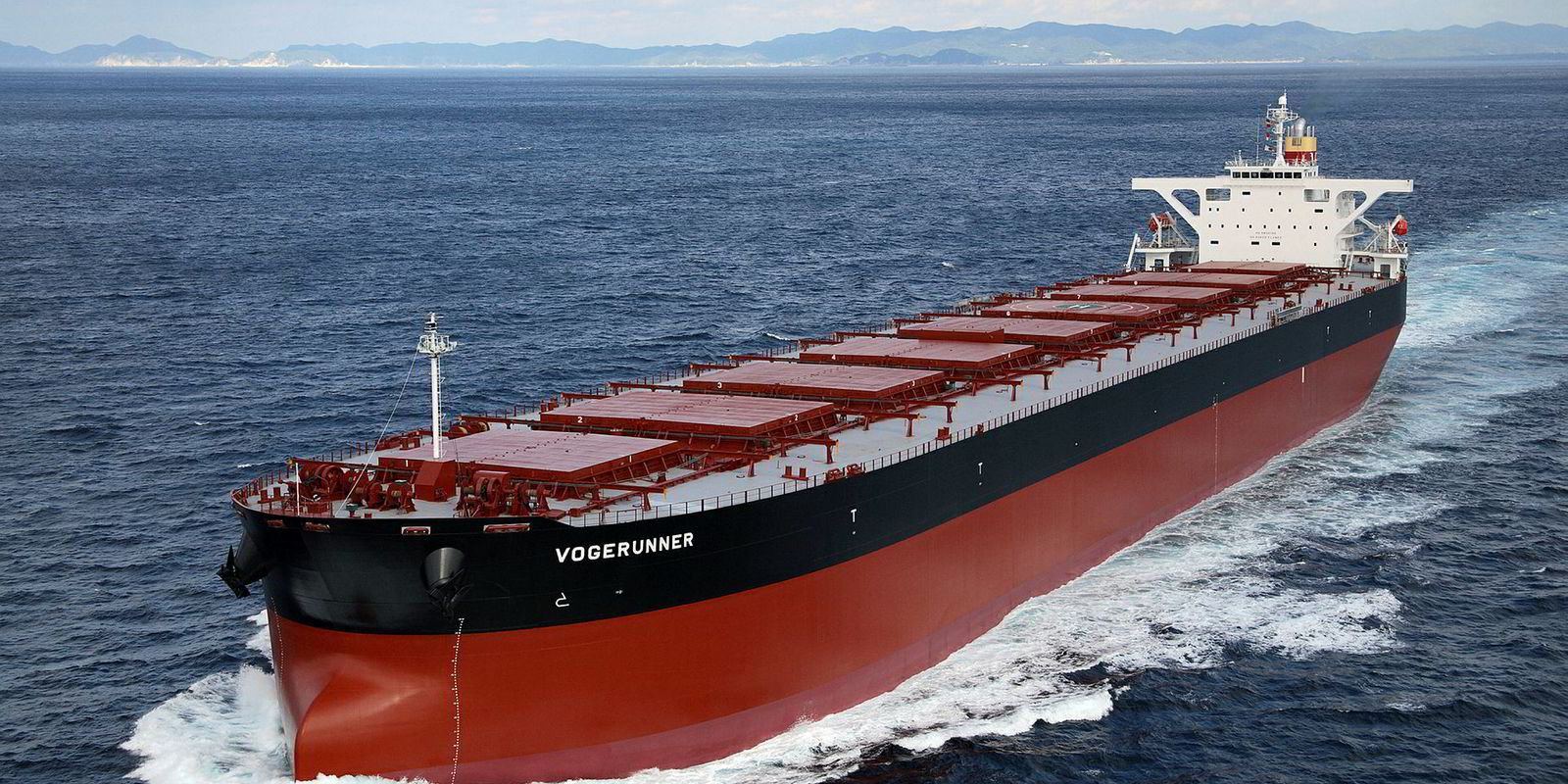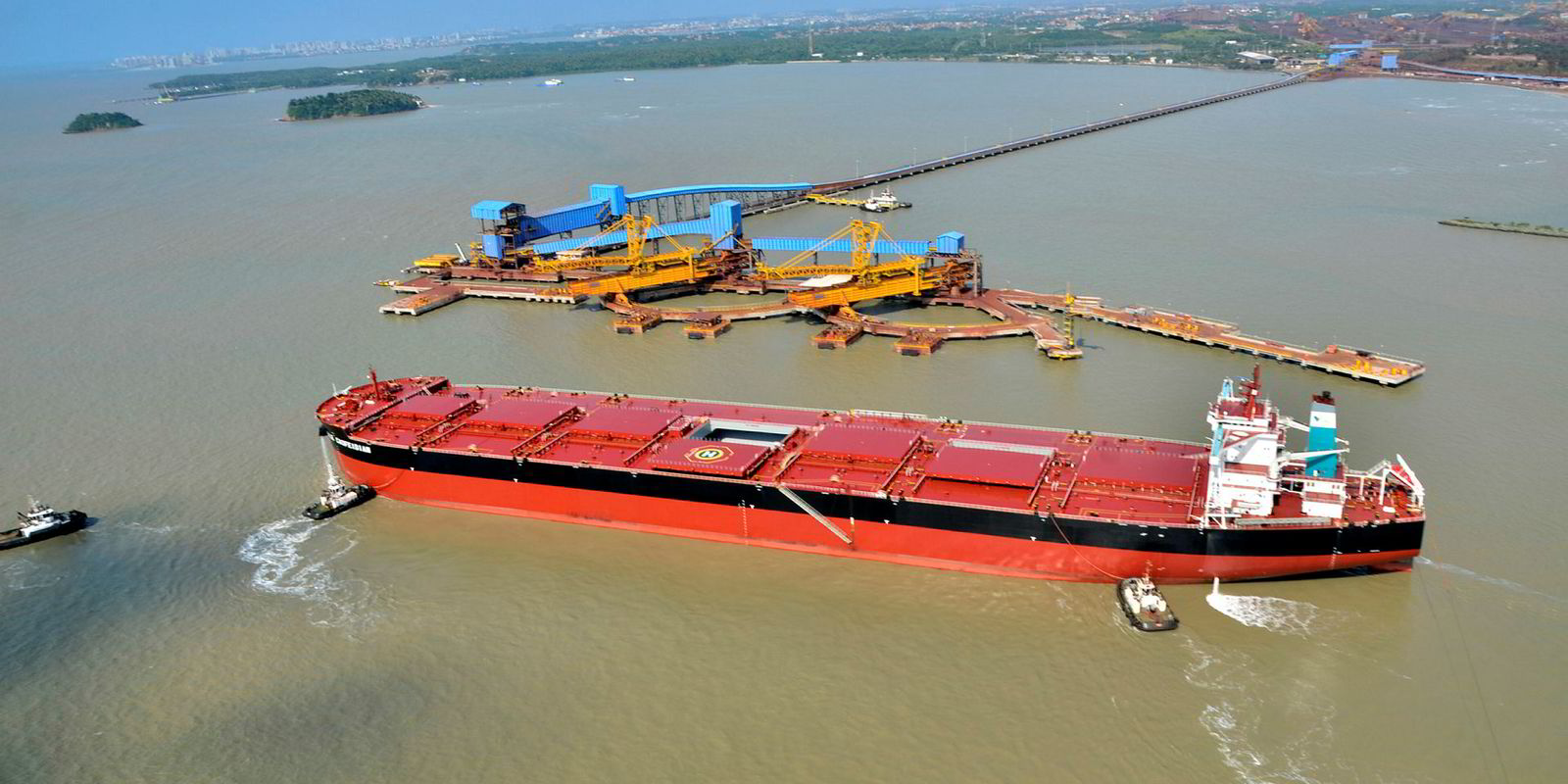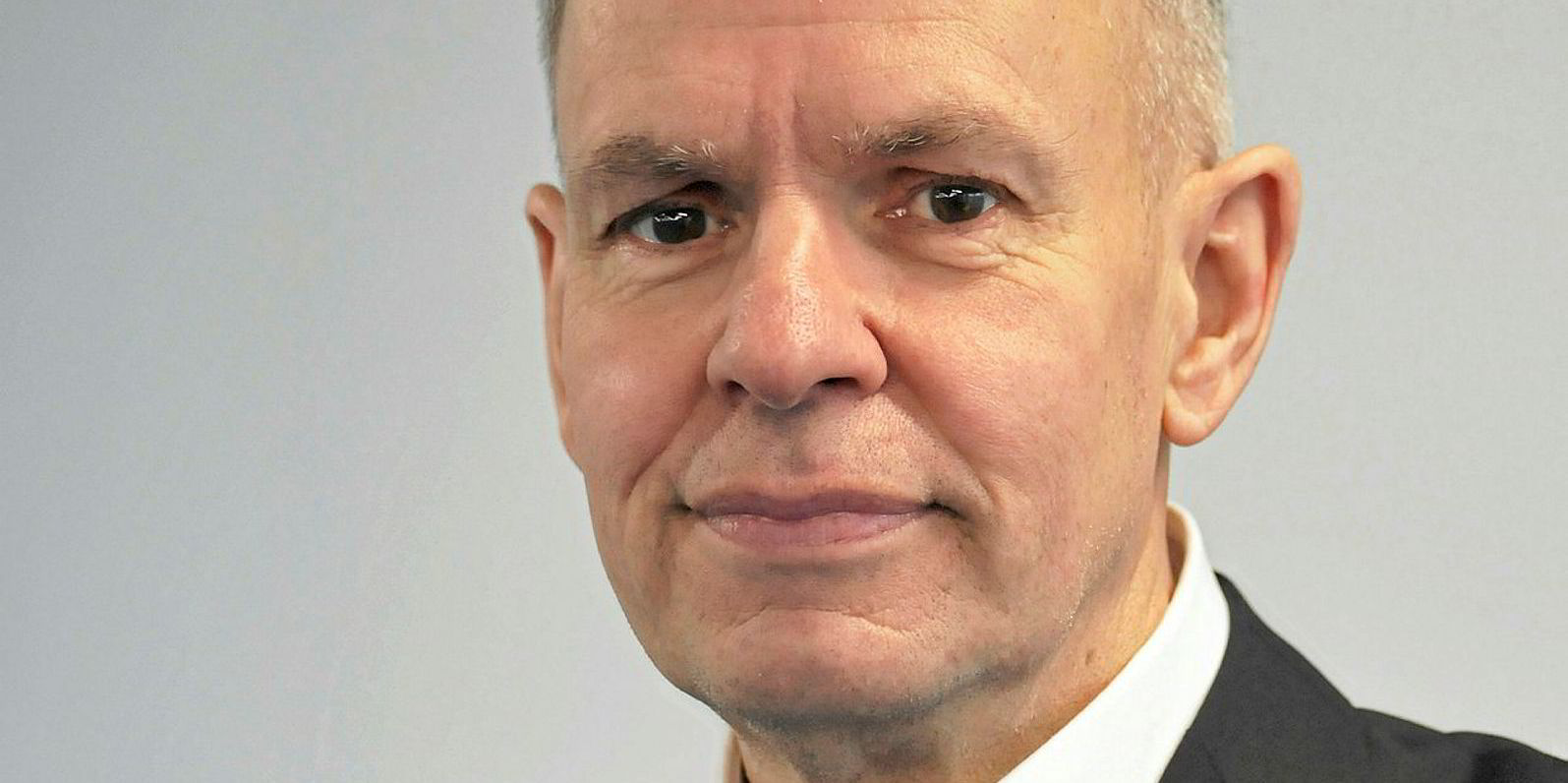A 20% increase in iron ore prices over the past three months has fuelled talk of a commodity boom and hopes that bulkers will have a strong end to the year.
Rising Chinese steel demand has sent the benchmark price of ore (containing 62% iron) to nearly $77 per tonne.
This compares with $63 per tonne in July, when steel manufacturers were fretting about the country’s growing trade war with the US.
Certainly, there has been no let up in the political pressure being exerted on China by US President Donald Trump — quite the reverse.
But the Beijing government has been pressing ahead with national infrastructure projects and loosening monetary policy to keep China moving at a difficult time.
Soaring prices
The soaring price of raw materials — coal has also been high over the past six months — indicates to optimists that China can weather the Trump tempest without making major diplomatic concessions, which it seems unwilling to provide.
“The Chinese [economic] machine is still working very well,” Jean-Sebastien Jacques, the chief executive of mining giant Rio Tinto, told Bloomberg Television.
“The mood is still pretty good,” he added, explaining that steel output in China is heading for a record year.
But there is no doubt global investors are nervous that a trade war will eventually burst this bubble.
The mining companies — including Rio Tinto — have seen their own share values fall 15% since early June.
The Shanghai Stock Exchange Composite Index of wider Chinese equities has recently hit a four-year low, while the country’s GDP slowed in the third quarter to its lowest level since the financial crisis of 2008.
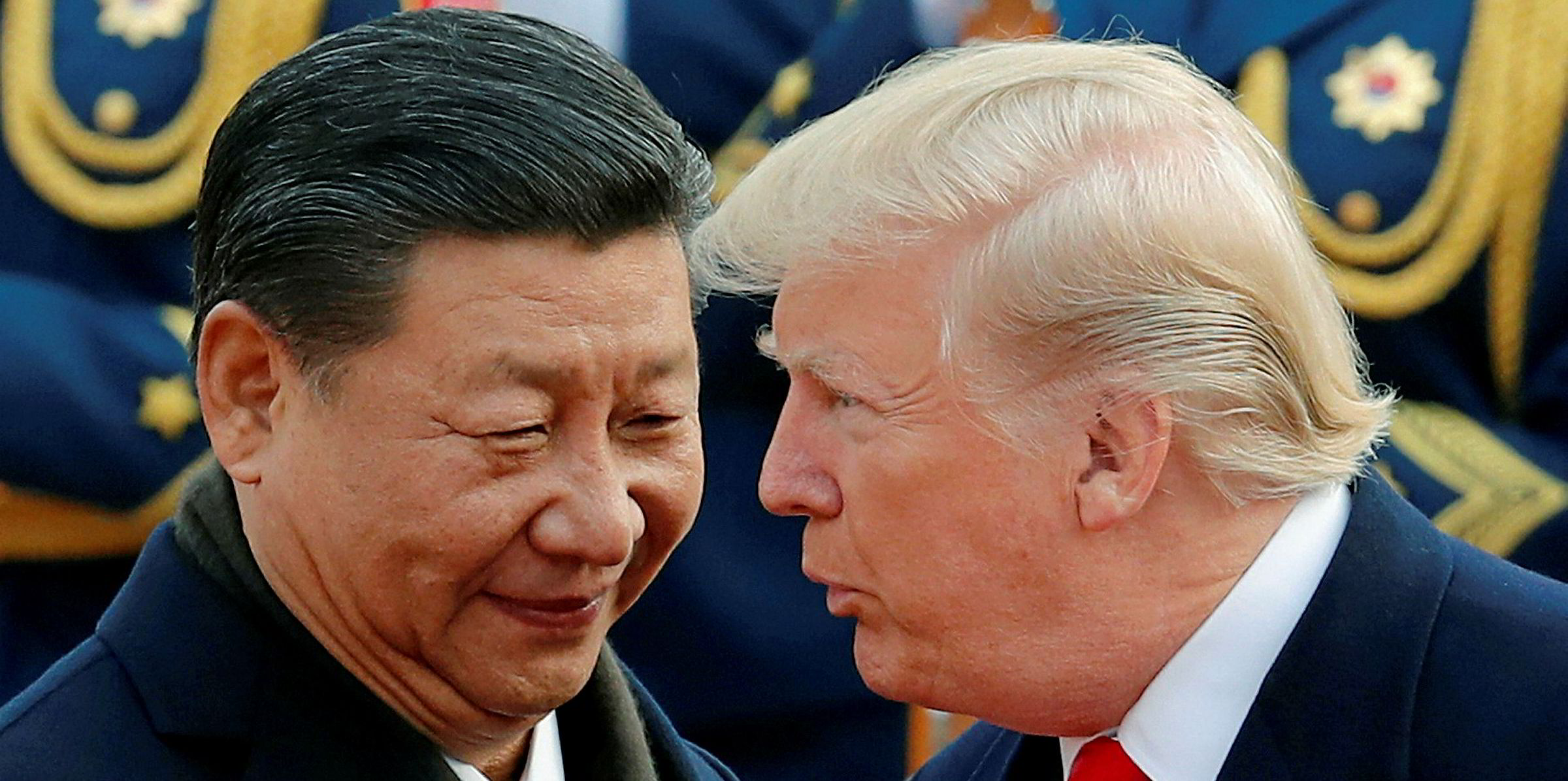
And even more troubling for President Xi Jinping, the Chinese currency — the yuan — is at its lowest level for a decade against the dollar.
This only makes the country’s position even worse in the eyes of the US because Trump claims the devaluation is being engineered deliberately to make Chinese imports to the US even cheaper.
The trade imbalance between the two countries in China’s favour is at the heart of this East/West struggle.
The soaring price of raw materials indicates to optimists that China can weather the Trump tempest without making major diplomatic concessions
Countering sanctions
Equally, Xi is being forced to reflate his economy to counter Trump's sanctions at a time when the Communist government wants to reduce very high local debt levels.
In addition, Beijing is trying to reduce pollution in China — including from steel mills — and keep happy a potentially restless and growing middle class.
It is a difficult juggling game, in the middle of which is a seaborne iron ore trade and a dry bulk shipping sector desperate for momentum.
Shipowners have been through a huge downturn but are now benefiting from exporters such as Brazil and Australia moving more coal and ore to China and India.
The position of vessel operators has also been improved by a significant amount of ship scrapping over the past two years.
Latest figures from shipbroker Braemar ACM show dry cargo newbuilding deliveries are set to reach their lowest level in a decade during 2018, although this picture will change next year.
Spats and squalls ahead
Nobody is in any doubt that the trade spats between Trump, China and the European Union could depress global trade in the long term and, therefore, could be very negative despite any short-term advantages that can be seen today.
Equally, there are plenty of squalls on the maritime horizon, not least the looming introduction of the 2020 sulphur cap on bunker fuel.
Then, of course, dry bulk shipowners with limited cash resources still must decide what to do about full decarbonisation.
And, anyway, what about the long-term future for coal carriage?
The annual conference of the Association of Bulk Terminal Operators in Hamburg, Germany, last week noted that China, India, Japan and South Korea imported 900 million tonnes of coal each year compared with 110 million tonnes in Germany and the UK — Europe’s biggest importers.
Germany now produces 36% of its electricity from renewables, with more “green” growth planned, while the UK has promised to close all of its coal-burning power stations within seven years.
Zero-carbon goals are being discussed everywhere and it may be highly symbolic that the world’s largest coal export port of Newcastle in Australia is now looking to diversify from fossil fuels into containers.
But that is looking to tomorrow. Today, dry bulk ship operators are happy to help China keep those blast furnaces blazing for steel.

